Prompt Action for Mold Growth
If you find some mold on the ceiling or wall of your home, you need to take prompt action without delay. It’s well known that mold is unhealthy and undesirable. Moreover, it often indicates that a leak has occurred somewhere, and if not addressed, the mold or the resulting dampness will further cause damage to your furniture and personal belongings.
A Case Study: Mold on the Ceiling
Each year, we deal different mould issues, like one of our customers in Bellevue Hill. When we arrived at their home, a considerable amount of mould had already taken hold and was flourishing on the walls and ceilings. This bathroom is located on the ground floor. The customer was unable to determine when the mould began to grow.
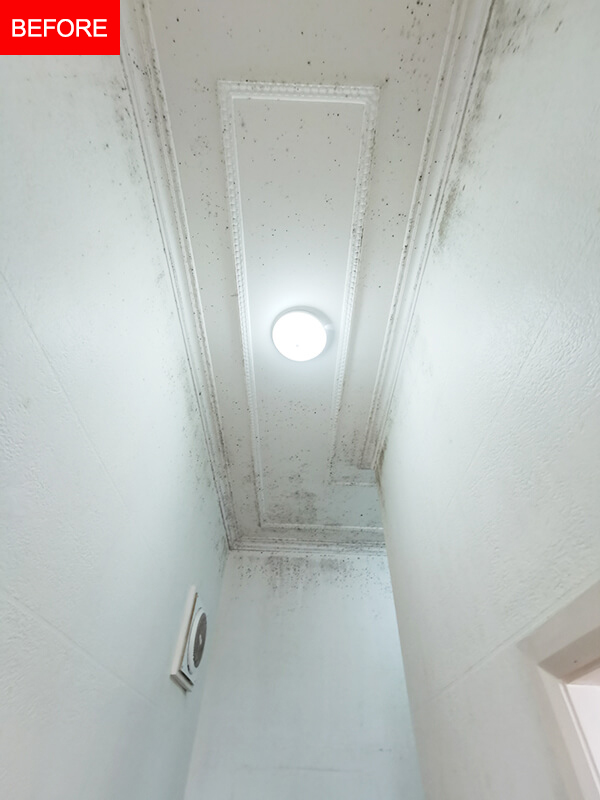
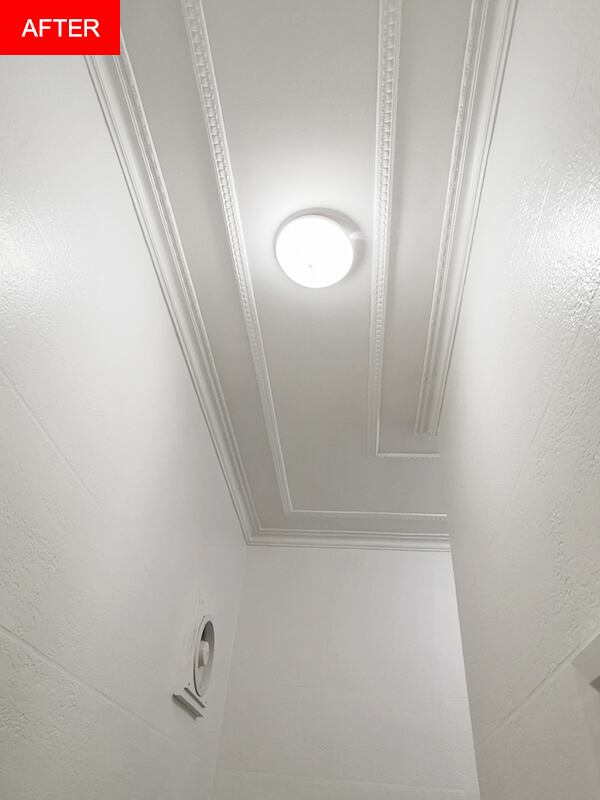
Identifying Underlying Causes-Mold on the Ceiling or Wall
Definitely, there must be invariably one or more underlying causes behind the mold buildup in our home, such as leakages, condensation, or high humidity levels. It may only take a small area of the wall for mold to establish itself and steadily grow before we notice an entire ceiling or wall blackened with fungus.
Upon meticulous inspection, we found a leak at the corner of exterior wall and staircase landing, which is just next to the interior bathroom ceiling. We also recommend that the customer install a new exhaust vent so that this bathroom could be better ventilated.
Conditions That Trigger Mold Growth on Ceilings or Walls
Mold growth can also be triggered by various conditions in the home.
When it rains for several days, it is especially common to see mold start to grow on walls, benches, and other surfaces due to the humid air. If you live in an area where the humidity in the air is naturally high, such as near the coast, a lake, or a swimming pool, then mold growth in your home can also be a recurring problem. Keep the windows open during sunny days to ensure better ventilation for your home. And close the windows when it’s raining outside.
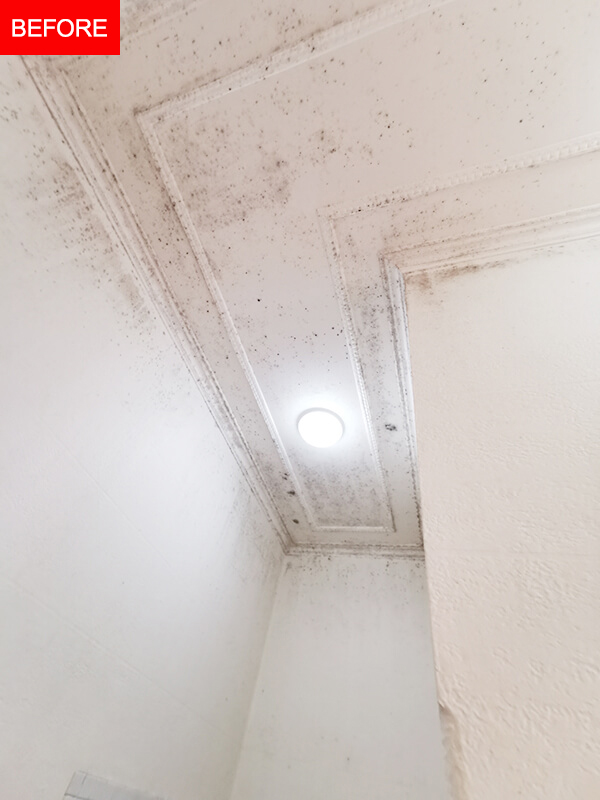
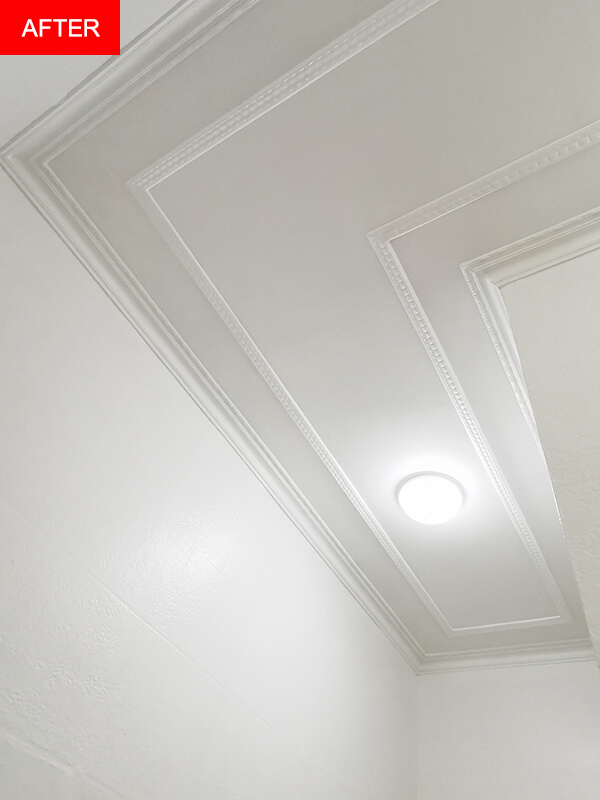
Ventilation in Steamy Rooms
It is of paramount importance to ventilate the rooms where steam and moisture accumulate, such as the kitchen and bathroom. Exhaust fans help to reduce the humidity when cooking or showering. This is precisely the reason why we recommended our customer to replace the old exhaust vent.
Addressing Leaks and Ceiling or Wall Mold Growth
Leaks are another reason for causing mold, such as leaking roofs, walls, flushers, or leaky pipes, showers, and taps. If you notice mold or water stains on ceilings or walls, inspect your home immediately for water leaks. In some cases, you may need to consult expert leak repair professionals who can effectively identify and fix the leak source.
Ground Slope and Drainage
If the ground around your home slopes towards the house, rainwater will end up accumulating at the foundation. If this is a persistent issue, you might need to undertake landscaping to adjust the ground slope, installing drain channel, etc. ensuring that water drains away from the house.
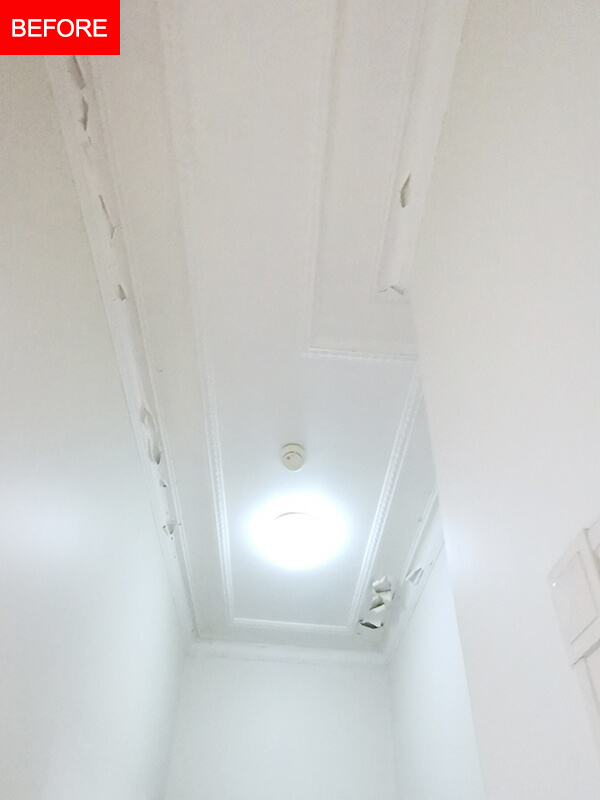
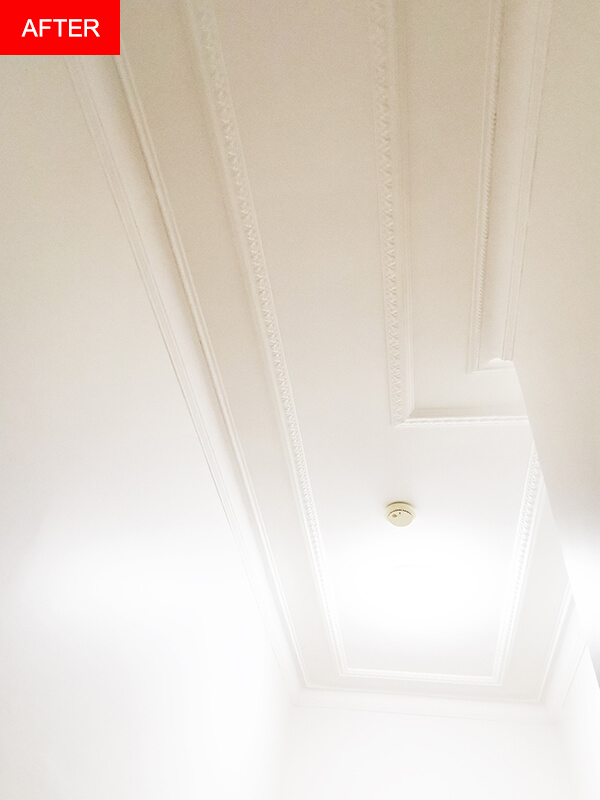
Cleaning Mold
You can scrub mold with a damp cloth and bleach or mold killer spray if it hasn’t damaged surfaces. If the leak or dampness persists, it could further harm your property. In such cases, call an expert to repair or replace damaged parts. Professional help not only fixes the current issue but also prevents future mold problems.
